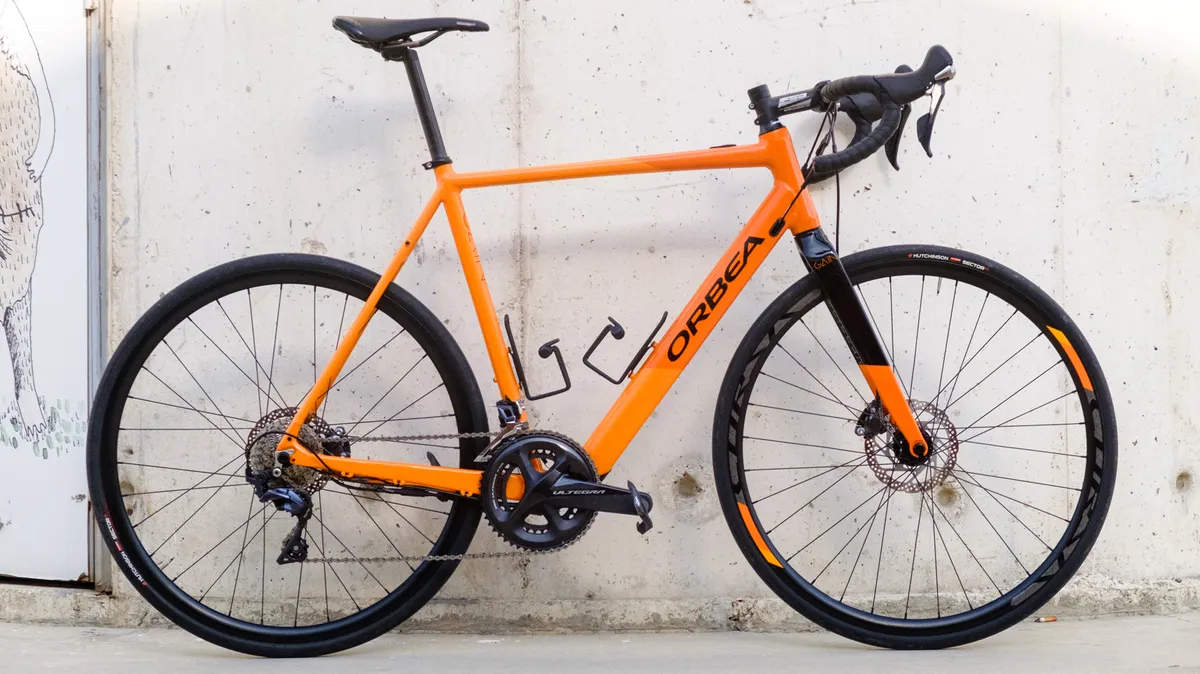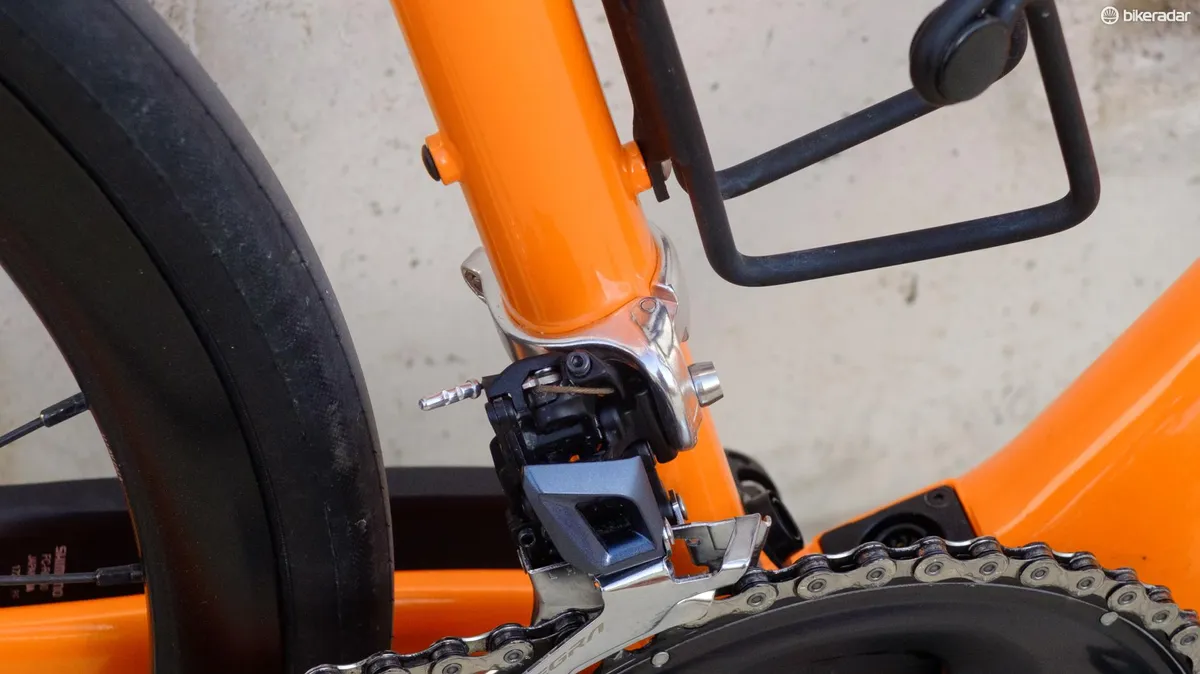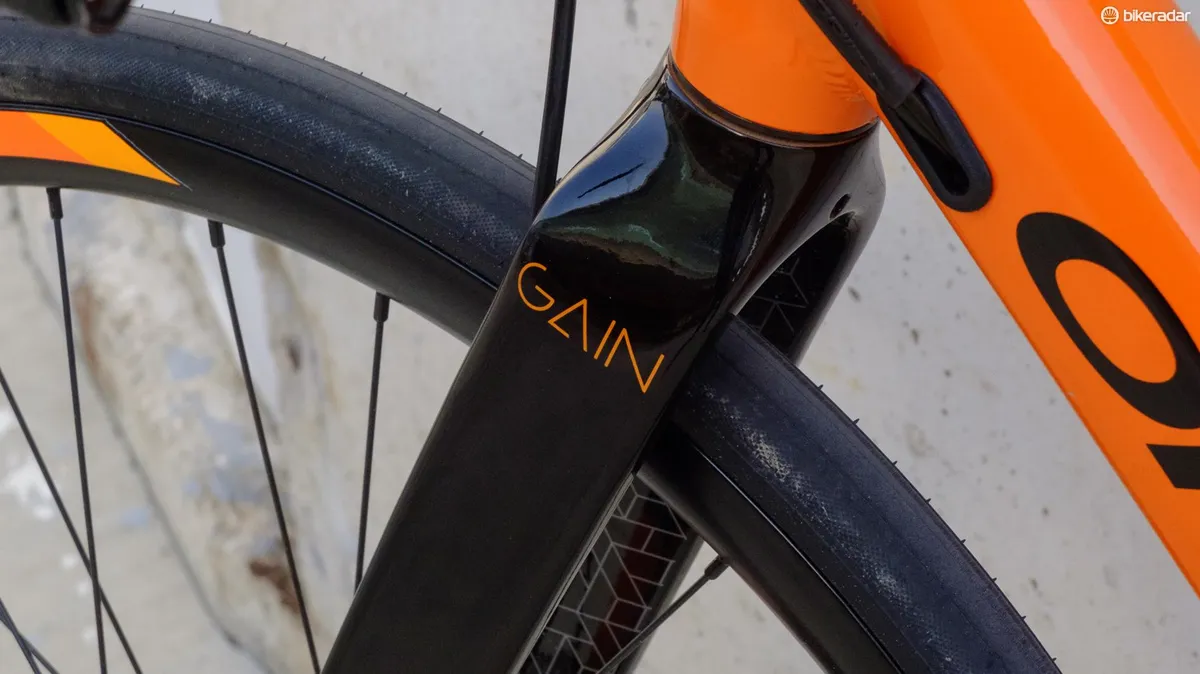The recently announced Orbea Gain joins a host of new and very refined looking e-road bikes, but, unlike the vast majority of e-bikes, uses a totally unique hub-based motor that is designed and manufactured by fellow Spanish countrymen ebikemotion.
Anatomy of the Orbea Gain e-bike
While bottom bracket based motors are now a well matured technology, Orbea was most interested in making the drive system on the Gain as discreet as possible — something a STEPS or Bosch motor has never been described as.
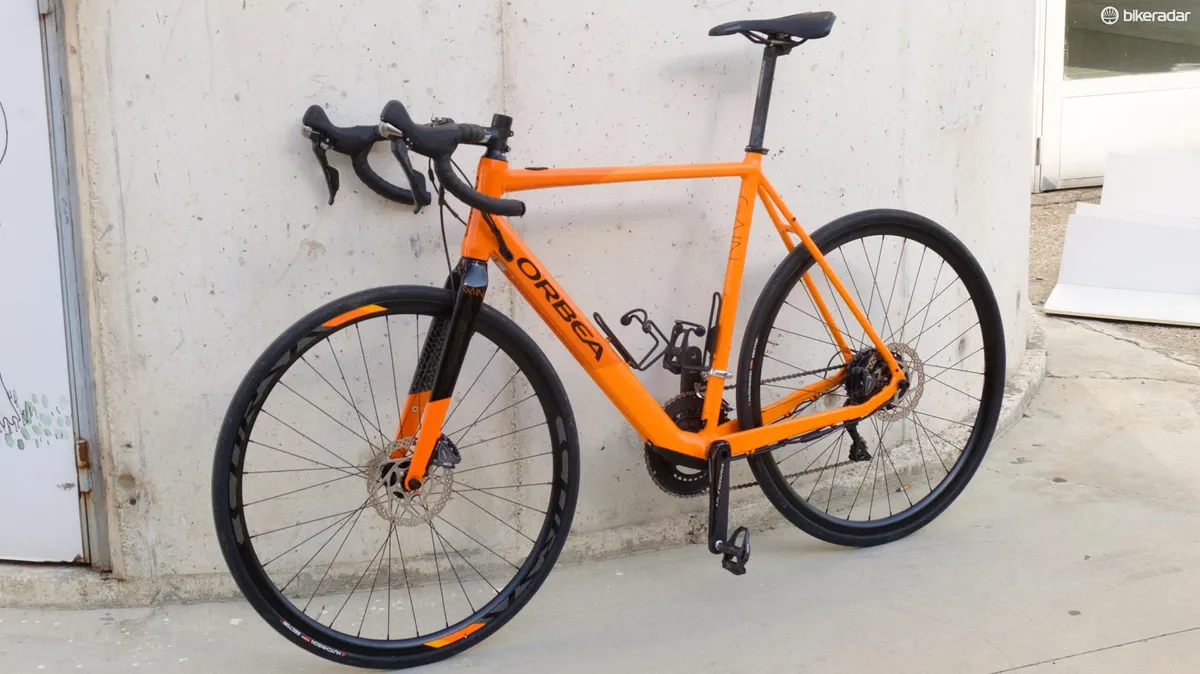
I personally think that Orbea has achieved this goal here. It’s almost impossible to tell that the Gain is an e-bike at first glance, as the down tube isn’t abnormally large when compared to the wind cheating beefy profiles that we’ve grown accustomed to in recent years.
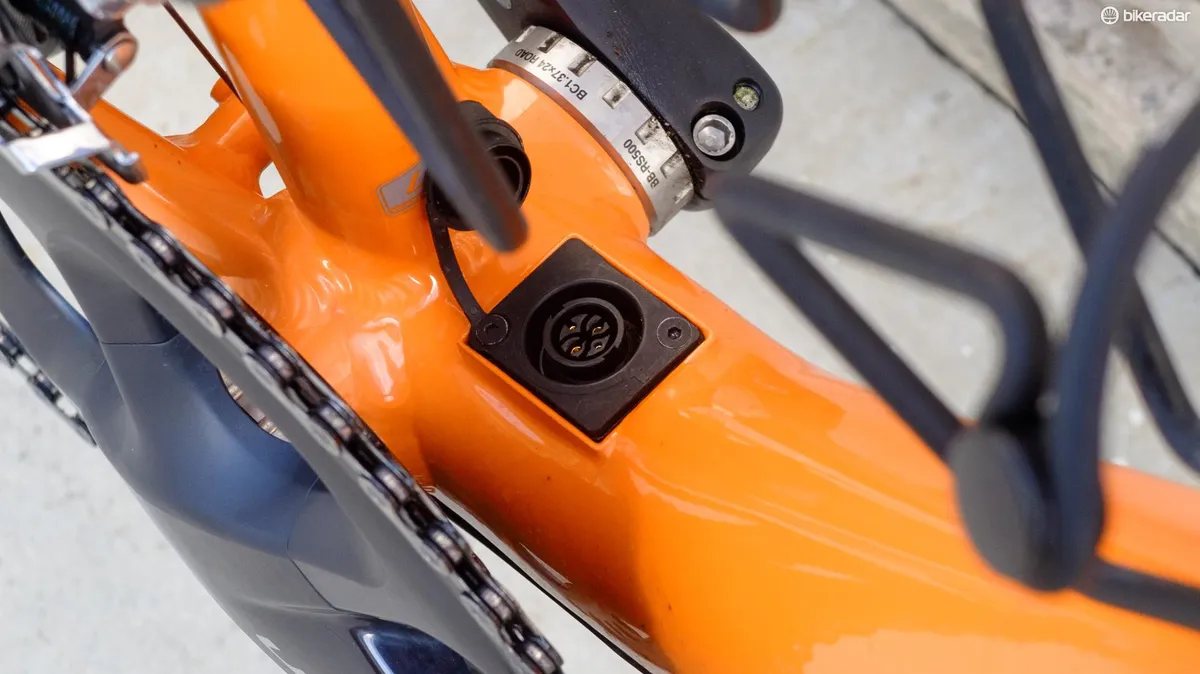
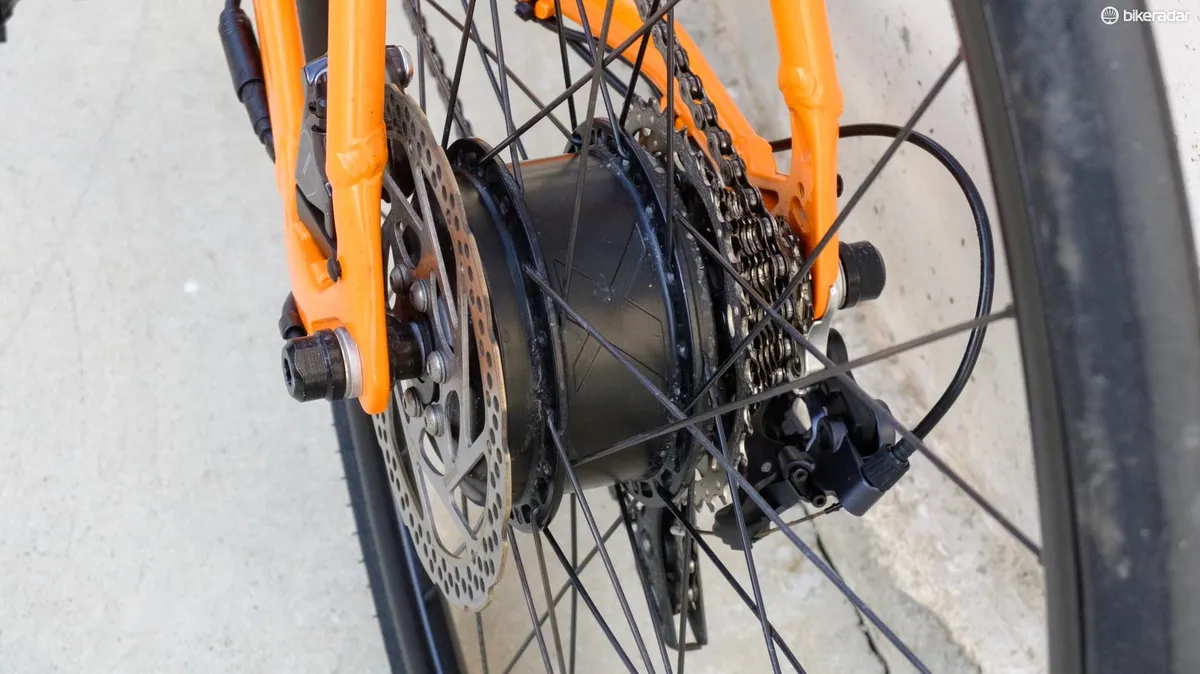
Otherwise, all that gives away that this is an e-bike is a small four-pin charging port at the base of the down tube, which Orbea is calling the C.A.N (Controller Area Network), the remote built into the top tube, the extra cable running along each chainstay and the abnormally large hub.
The battery is not replaceable by the end user, but can be replaced by a dealer via a small ‘door’ that is located just in front of the (threaded!) bottom bracket shell.
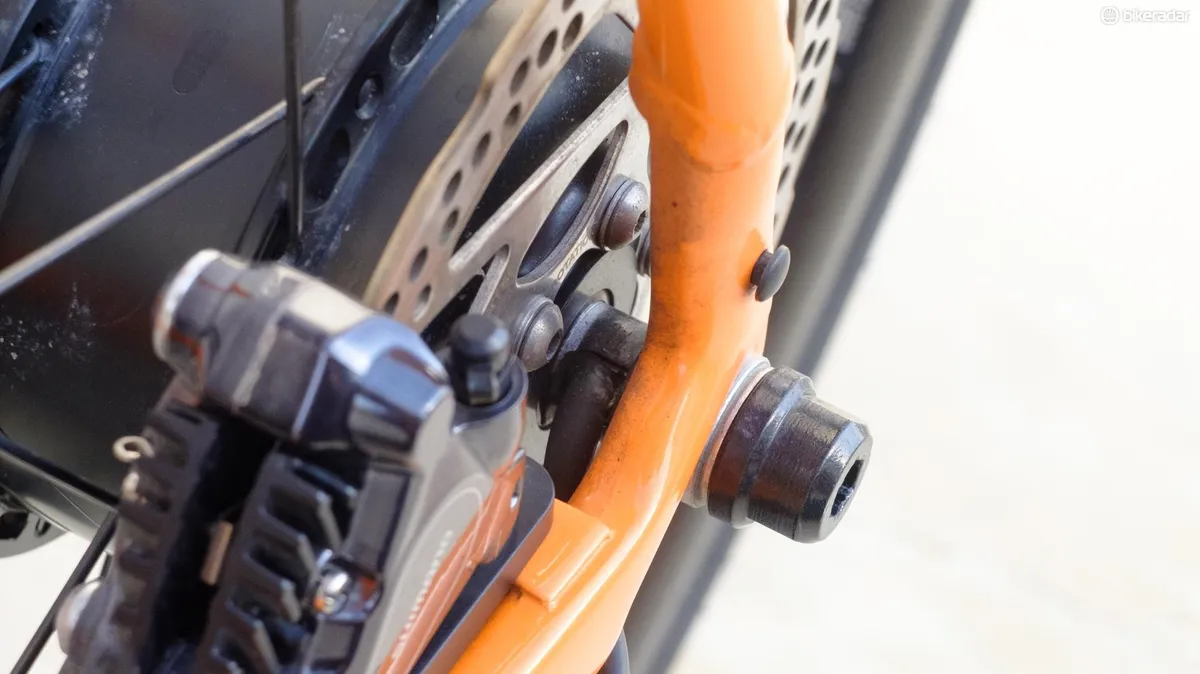
The X35 drive system is designed and manufactured by ebikemotion in Spain, though Orbea refers to the whole system as ‘Enough Power’.
The whole setup, including battery, motor, port and controller, is said to weigh a really rather impressive 3.5 kg, bringing the total claimed weight of a size 56cm bike to 13kg.
Orbea claims that the idea behind ‘Enough Power’ is that the motor and battery provide just enough oomph to give you a helping hand as opposed to a full on moped experience.
As such, the battery is considerably smaller than a typical e-bike, though Orbea claims that the system is still good for 100km of riding or 1,500m of climbing at 25km/h.
Orbea didn’t give any indication as to the capacity of the battery during the launch, but assuming it’s the same one as described on the ebikemotion site, it has a capacity of 250Wh.
Should that not be enough for you, a separate external booster battery for longer rides is due to be available in the very near future.
The X35 hub uses a proprietary cassette lockring that is embedded with 20 magnets. These are detected by a sensor that is integrated into the dropout, which then feeds back information to the motor control unit, adjusting power output accordingly.
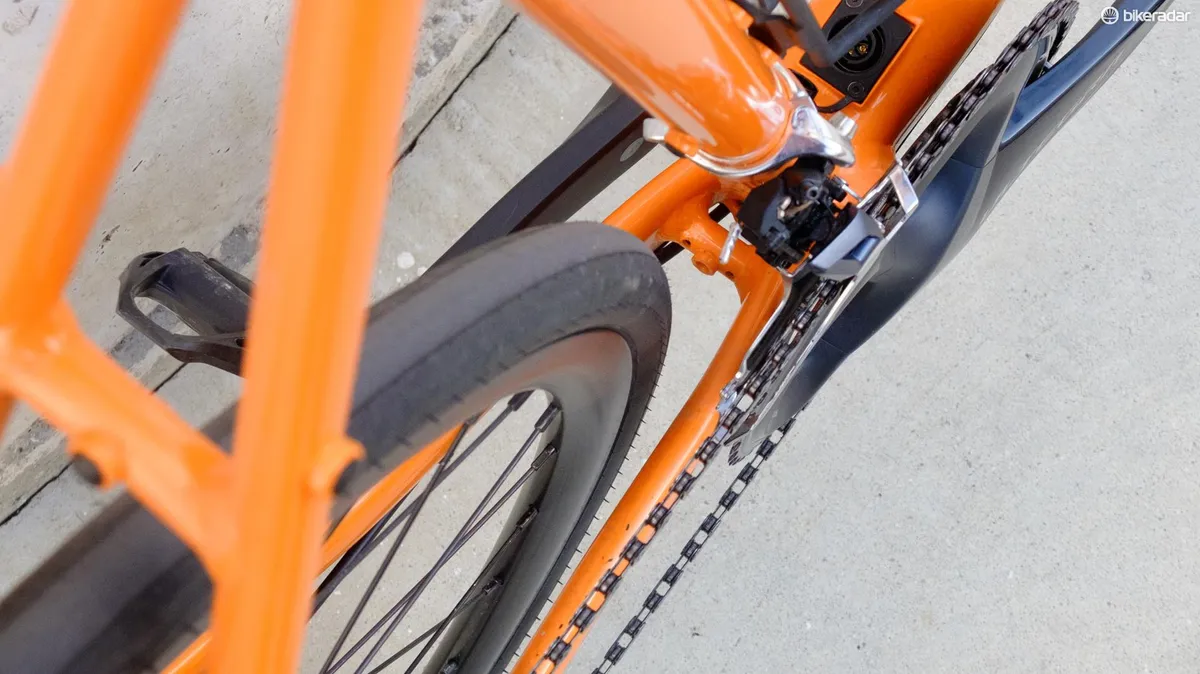
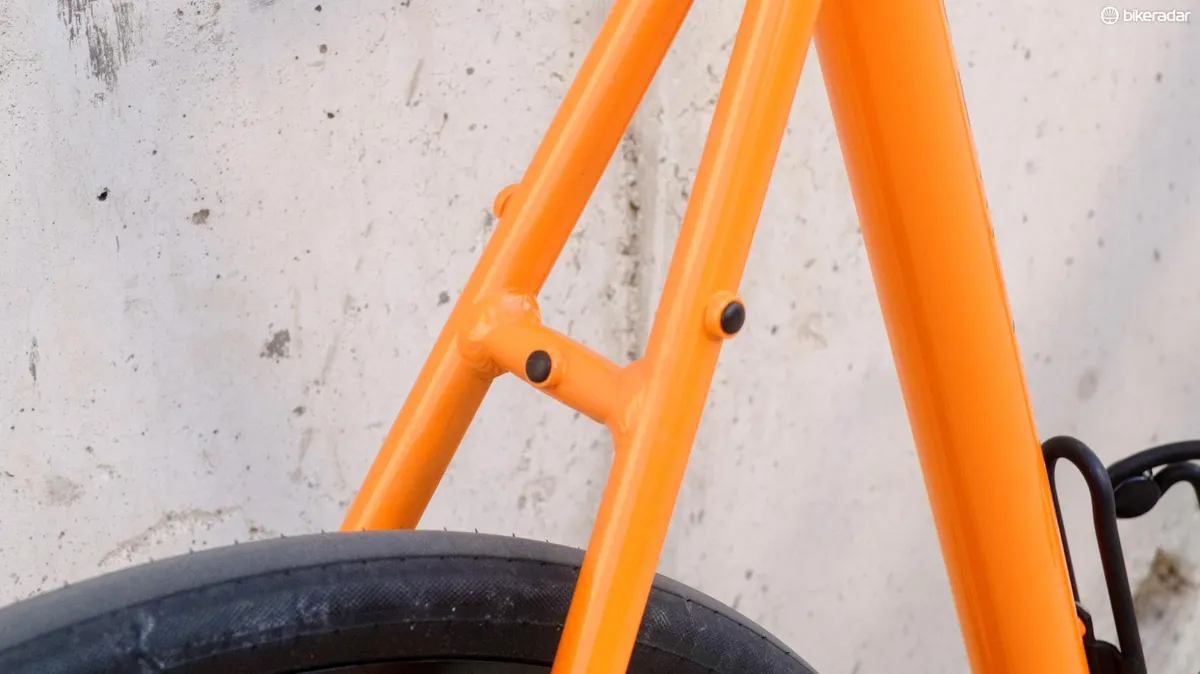
Orbea gains serious brownie points from me for including generous tyre clearances and a full complement of rack and mudguard mounts on the alloy frame of the Gain. These hardly detract from the overall look of the bike and make the bike much more versatile.
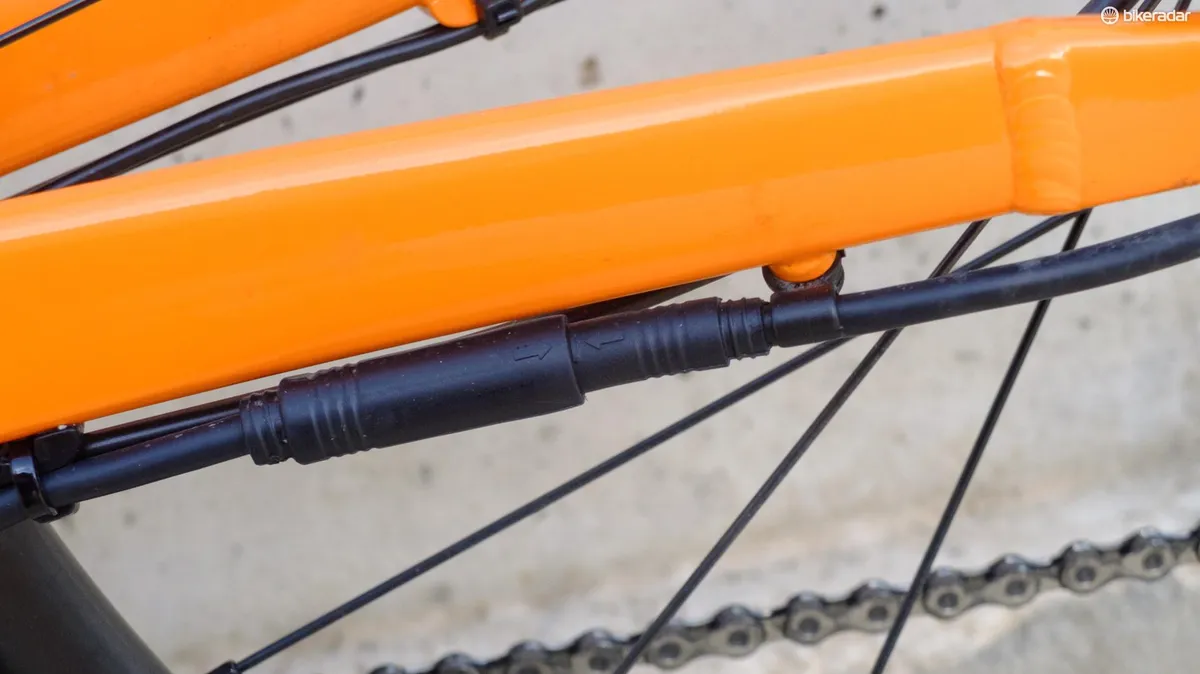
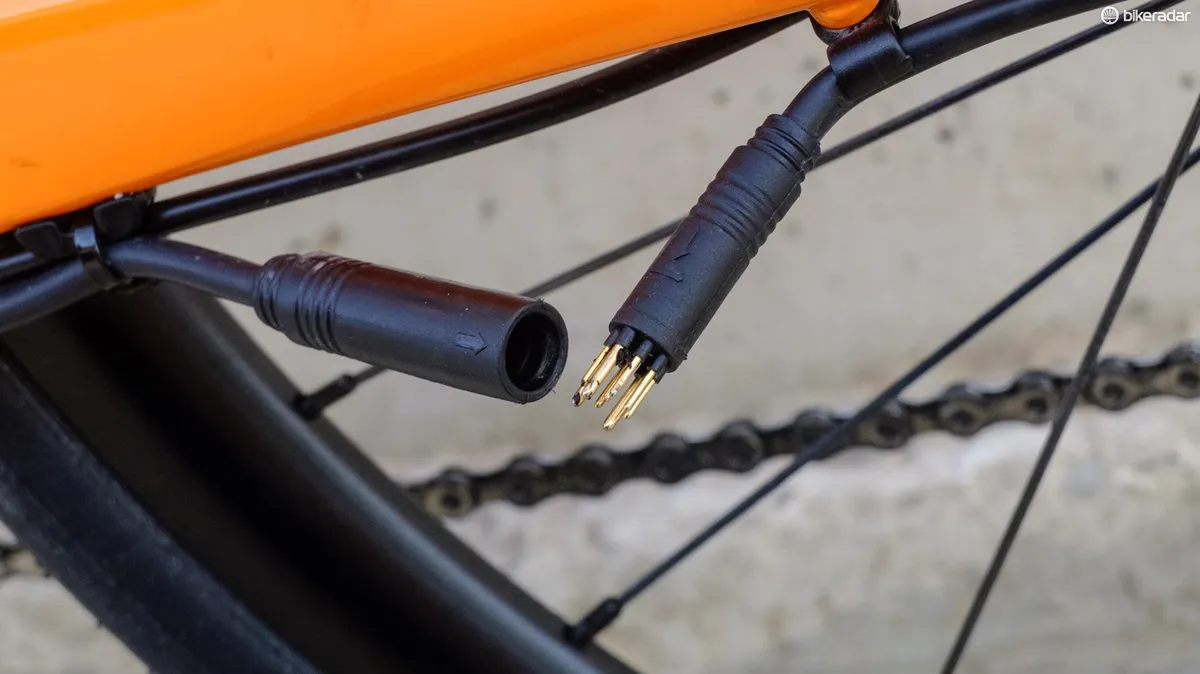
Unlike some other e-bikes that use hub-based motors, removing the rear wheel is a painless affair; unplugging a six-pin connector before undoing the quick release with a 6mm Allen key is all that differs from a normal bike.
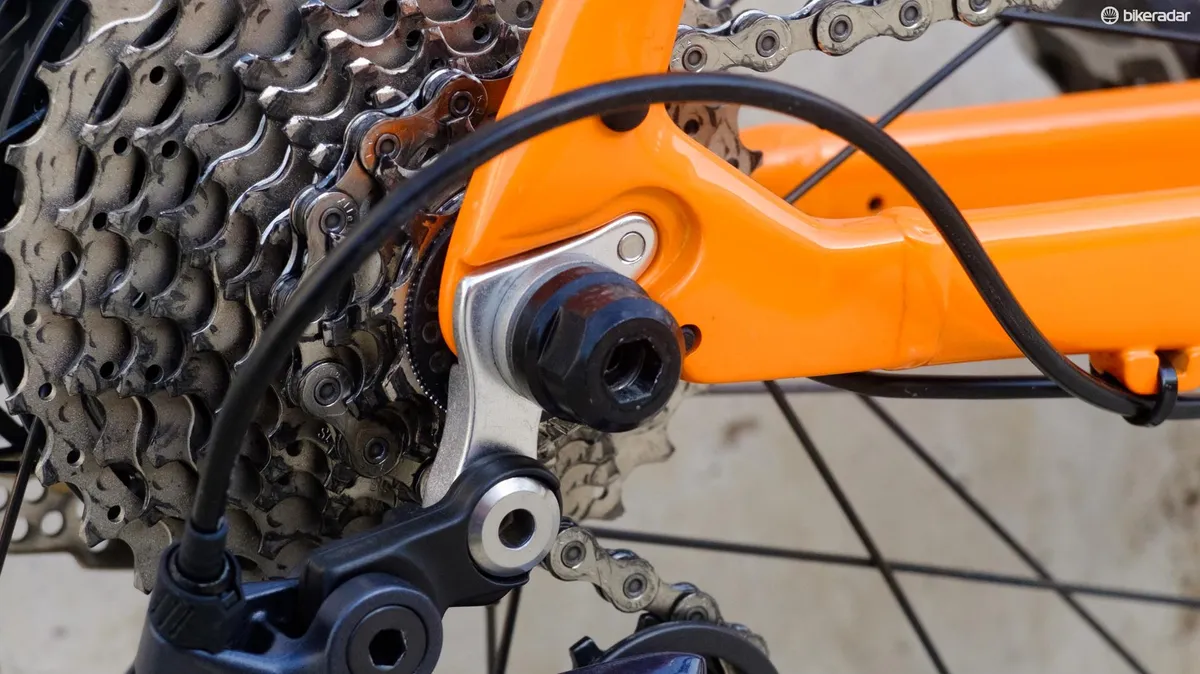
The geometry of the bike sits somewhere between Orbea’s Terra gravel bike and its Avant endurance road bike, so should stack up as a good all-rounder on paper at least.
A serious cool looking flat bar urban version of the Gain is also available, though that wasn’t on hand at the launch.
Orbea Gain first ride impressions
Our 40km test ride took in a loop around the plains to the North of Madrid, with a 10 km dogleg up the 1,500m Puerto de Canencia, a rather lovely, mellow, 8-ish-percent average climb that was then followed by a rowdy descent back down the pass.
I rode the top-end Gain D10, which comes equipped with a Shimano Ultegra R8000 groupset and ‘Black Jack’ mid-depth carbon wheels (though pictured is a slightly different model with alloy wheels and a handsome orange paint job).
The ride started with a short climb on smooth roads out of town, which was the ideal place to get familiar with the Gain’s unique iWoc control system and its different levels of assistance.
It’s worth noting that the iWoc mode button on my test bike was an early 3D printed prototype, but its functionality is said to be the same as the final product.
The button is encased in a plastic shroud that is built into the down tube, with the button itself surrounded by an RGB LED — other than the app that complements the system, this is the only display for the system.
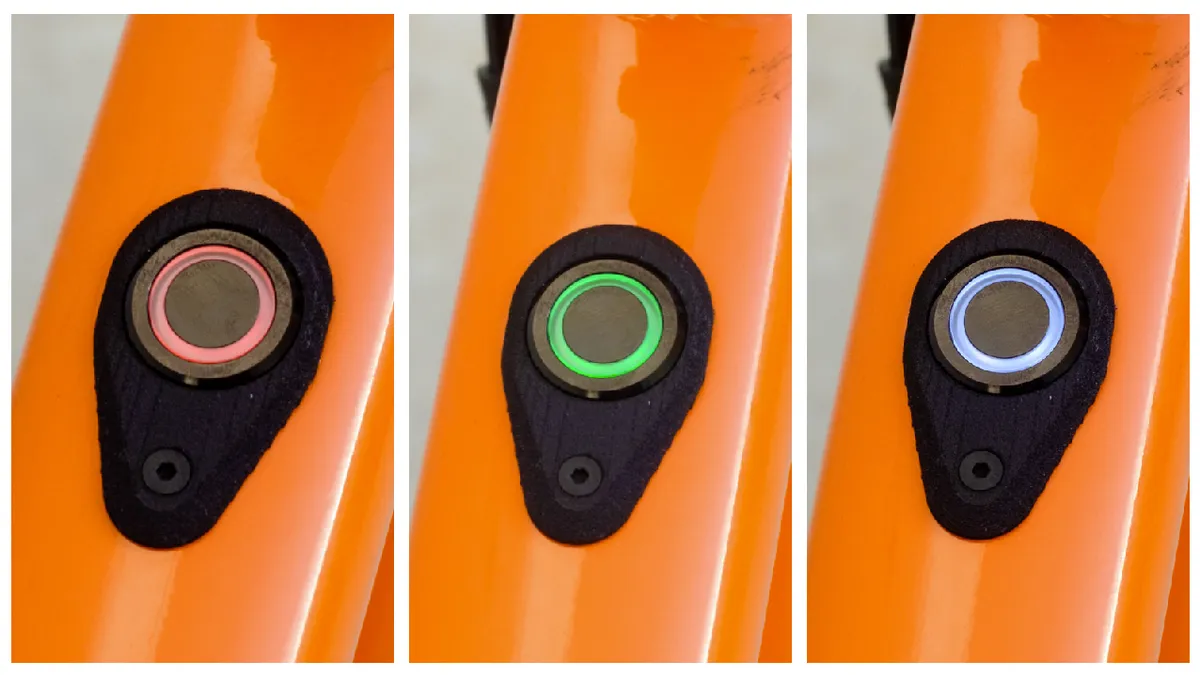
By clicking once, the button will let you know what assistance mode you’re in (white = off, green = eco, red = boost) and a double click will change between modes. The button displays a constant colour by default and this is used to indicate the amount of charge left in the battery.
While this might sound confusing, it took all of five minutes to get used to and even though I only spent a little time on the bike, I feel that I definitely prefer this unobtrusive approach to controls.
The iWoc button's app can display all manner of metrics, though my phone rather unhelpfully died moments before the ride, so I haven’t had a chance to use it yet.
If you’ve used an e-bike before you’ll be familiar with how each of the assistance modes feel, but as a brief summary, the green eco mode gives more of a gentle push and the red boost mode provides a fairly exciting forward surge once you put some power through the pedals. There was a momentary lag when switching between modes, but this was hardly distracting.
The power that each of these modes delivers can be altered via the app, and if I had spent any more time on the Gain I would have been keen to dial things down a little — at 68-ish-kg I found both the eco and boost modes a little spicy for my liking and hardly in-keeping with Orbea’s ‘Just Enough’ concept.
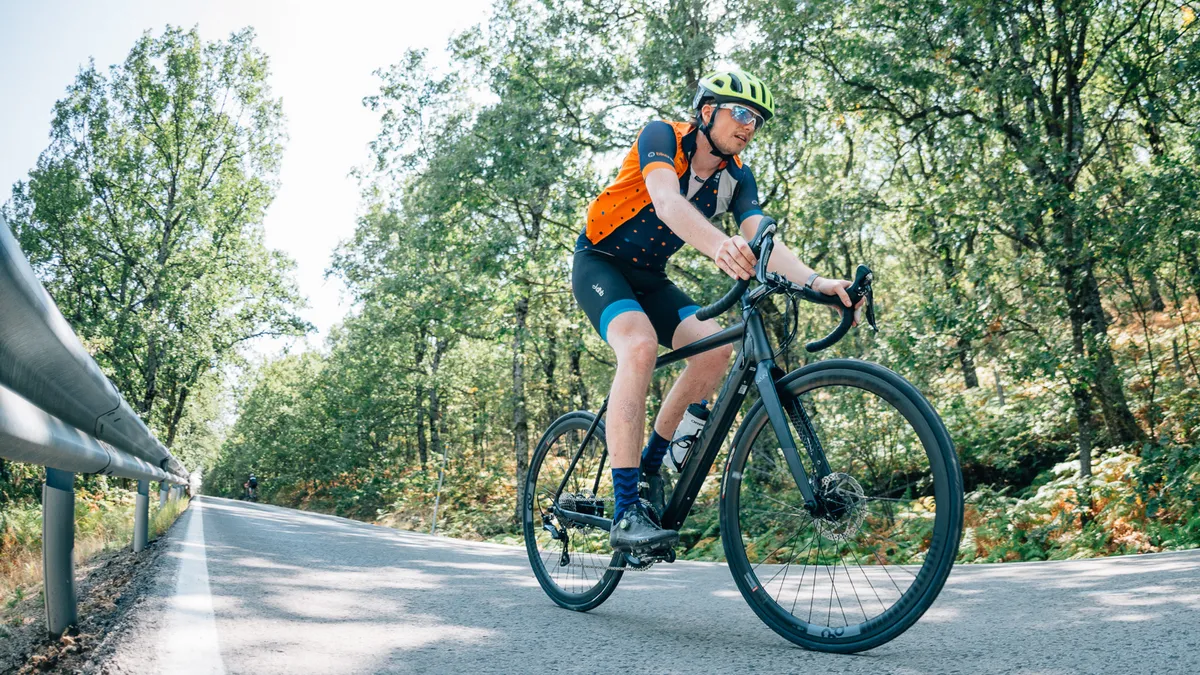
With that said, when I did eventually hit the climb, I powered away as best I could while trying to keep up with a bunch of particularly competitive Italian sales managers.
Needless to say, upon reaching the top of the summit I was absolutely cooked after riding on, or at least close to, the 25 km/h limit of the motor for the length of the climb.
If you need that spelt out more clearly, the bike did not do all the work: I simply climbed the hill faster than I normally would, so please refrain from describing this as a motorbike in the comments thank-you-very-much.
Even when it’s working very hard the X-35 motor is remarkably quiet, and I suspect on a windier day you would be hard pushed to hear its gentle hum at all.
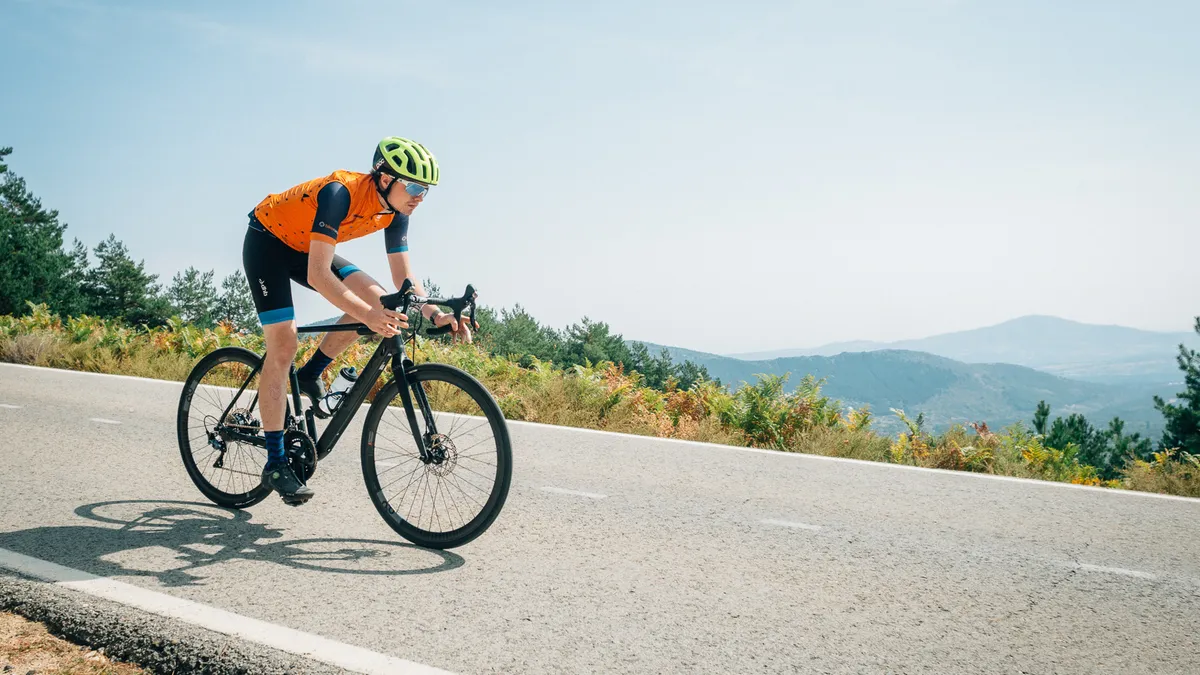
Descending on the bike was an absolute hoot as the additional heft and low placement of the hub, matched with the generously plump 28mm Hutchinson tyres, made for a super stable ride that encouraged the most rowdy and sideways of behaviour in the corners.
The descent was followed by more rolling terrain and sweeping corners, and the short rises were particularly amusing with the additional oomph offered by the motor in boost mode allowing you to accelerate and maintain an unnatural, but undoubtedly fun, velocity.
After the ride the battery had run down to ‘green’, indicating that I had between 50>75% charge left — had I been able to run the app I would have been able to tell you exactly what I had left — which is pretty impressive given I spent a good majority of the ride razzing the bike in the boost mode.
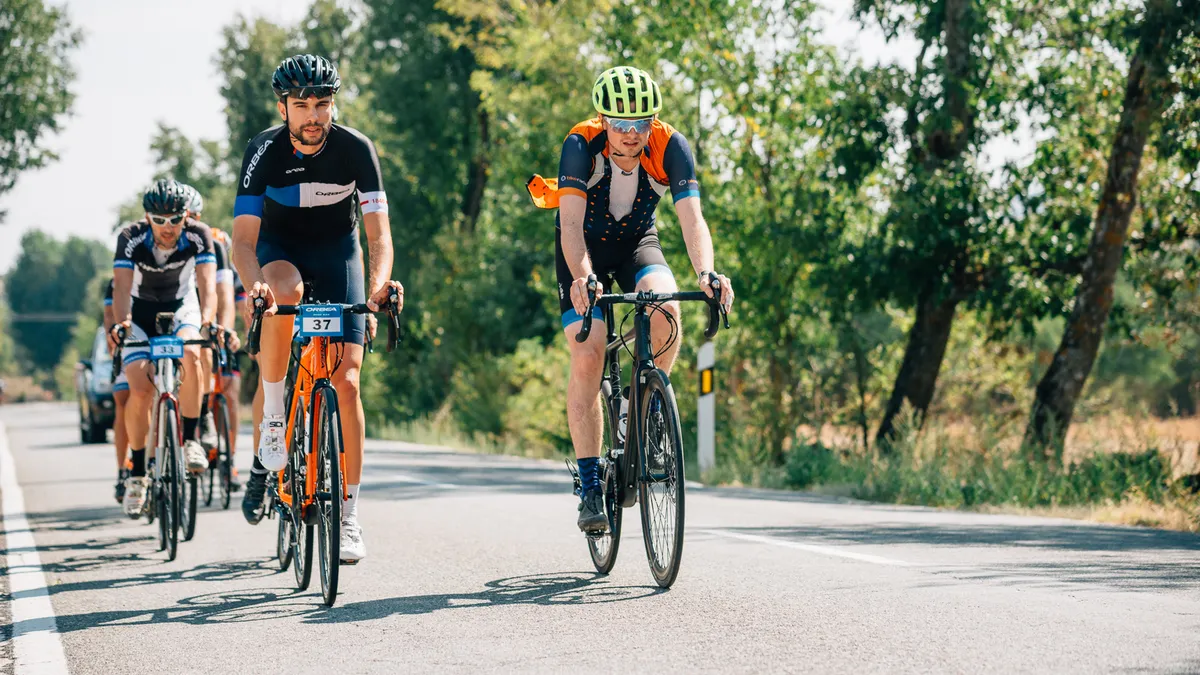
Once you reach the 25km/h limit of the bike, or if you’re a masochist who likes to ride with the motor off, there is definitely a bit of drag from the hub, but it's not overly distracting.
The system also has a slightly unsettling tendency to continue powering you forward for a second or so after you stop pedalling, but I didn’t feel as though this made coming to a stop any more difficult.
Orbea claimed that this was most likely a bug in the software that could be easily amended, and I’m inclined to believe them.
Orbea Gain e-road bike early verdict
We’re reaching a watershed moment where e-bikes are beginning to look more and more like regular bikes and I think that the Orbea Gain (and perhaps the Focus Project Y) are at the forefront of this movement.
While I had my initial scepticisms about Orbea’s use of a hub-based motor — something most usually associated with cheap and nasty e-bikes and conversion kits — the X35 ‘Just Enough’ system is every bit as refined, and perhaps even easier to use, than other bottom bracket based systems that we’ve seen previously.
While I’d need to spend more time on the Gain to come to a final conclusion — and I’ve been assured that a review sample is en route — I left my short time on the bike impressed by its performance and looking forward to really putting it through its paces. So stay tuned!
Orbea Gain pricing and availability
The first batch of bikes is due to ship on 15 of October, but if you want a Gain for yourself you’ll likely have a wait on your hands as the bikes have completely sold out. The next batch is due to land some time in January.
- Orbea Gain D40 — £1,799 / €1,799
- Orbea Gain D30 — £2,299 / €2,299
- Orbea Gain D10 — £2,999 / €2,999
- Orbea Gain Urban F40 — £1,699
- Orbea Gain Urban F40 — £1,799
- Orbea Gain Urban F40 — £1,999
- Orbea Gain Urban F40 — £2,199
